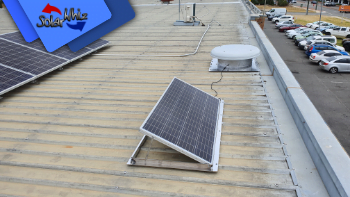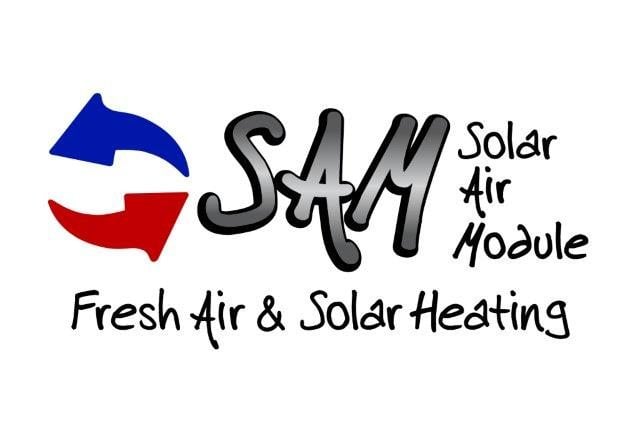In industrial settings, maintaining optimal air quality and temperature is crucial for both safety and productivity. One of the most effective ways to achieve this is by industrial roof-mounted exhaust fans. These powerful ventilation systems are designed to handle the demanding conditions of large industrial spaces, ensuring that air is continuously circulated, and contaminants are effectively removed. In this article, we’ll delve into the benefits of roof-mounted exhaust fans, the different types available, and key considerations for selecting the right roof mounted exhaust fan for your facility.
Benefits of Industrial Roof-Mounted Exhaust Fans
- Enhanced Air Quality: Roof-mounted exhaust fans help remove harmful pollutants, such as dust, fumes, and chemical vapours, from the air, creating a healthier environment for workers.
- Temperature Regulation: By expelling hot air and allowing cooler air to enter, these roof-mount exhaust fans help maintain a stable temperature, which can improve worker comfort, help stabilize the temperature, and reduce the need for HVAC systems.
- Energy Efficiency: Proper ventilation reduces the need for air conditioning, leading to significant energy savings. Roof-mounted fans are particularly effective in large spaces where traditional cooling methods may be less efficient.
- Odour Control: In industries where strong odours are prevalent, such as manufacturing or food processing, roof-mounted exhaust fans help manage and mitigate unpleasant smells.
- Moisture Control: Excess moisture can lead to mould growth and structural damage. Roof-mounted fans help control humidity levels, protecting both the building and its contents.
Types of Industrial Roof-Mounted Exhaust Fans
- Centrifugal Fans:
Known for their high efficiency and ability to handle large volumes of air, centrifugal fans work well in industrial applications that need powerful ventilation.
Cons: These fans take up more space due to their size. They are also more expensive and may require frequent maintenance because of their complex design.
- Axial Fans:
Designed for high airflow at low pressure, axial fans are perfect for applications with limited space. They are often paired with other ventilation systems to enhance efficiency.
Cons: Axial fans perform less effectively in high-pressure environments. They tend to be noisier at full capacity and are less energy-efficient compared to centrifugal fans.
- Mixed Flow Fans:
Mixed flow fans combine the features of both axial and centrifugal fans, offering a balance of high airflow and pressure, which makes them versatile for various industrial uses.
Cons: While versatile, mixed flow fans don’t match centrifugal fans in high-pressure environments. They are also more expensive than traditional axial fans.
These fans can struggle with backflow in windy conditions and might need extra maintenance to prevent buildup of grease or debris on the roof.
- Solar-Powered Roof Exhaust Fans:
Solar-powered roof exhaust fans provide an eco-friendly and cost-effective ventilation solution. They operate on solar energy, cutting electricity costs while minimizing environmental impact. For example, the Solar Whiz Commercial offers powerful ventilation for large industrial spaces using solar power.
Cons: On cloudy days or at night, solar-powered fans may not run as efficiently, sometimes requiring a backup power source. While generally quiet, some models may produce noticeable noise depending on their placement and surroundings.
Discover all the amazing features of the Solar Whiz Commercial!
Here are some examples of successful implementations of the Solar Whiz Commercial in real-world industries:
- Manufacturing Plants: A leading steel manufacturer installed the Solar Whiz Commercial to manage the heat and fumes generated during production. This installation significantly improved air quality and reduced cooling costs, enhancing worker comfort and productivity.
- Indoor Playcentre: The play centre is located in a repurposed warehouse with extremely poor ventilation, leading to significant problems with heat and dust that concerned both the children and staff. Solar Whiz provided an efficient ventilation solution to tackle the heat and dust issues. After installing the initial 8 units, the temperature difference was noticeable almost immediately, making the centre much cooler and more comfortable for both employees and children.
- Welding Workshops: A welding workshop implemented the Solar Whiz Commercial to extract welding fumes and smoke. This installation created a safer and healthier workplace by effectively removing harmful contaminants from the air.
- Laundry Shops: A commercial laundry shop installed the Solar Whiz Commercial to handle the massive amounts of heat and moisture generated by their dryers and washing machines. This solution improved air quality, reduced moisture levels, and created a more comfortable environment for staff and customers.
- Printing Company: A printing company utilised the Solar Whiz Commercial to manage the buildup of heat, smoke and fumes produced by their printing machinery. This installation helped maintain a healthier environment for the employees, reducing the risk of respiratory issues and improving overall air quality.
For more detailed case studies and to see how Solar Whiz has helped businesses achieve a safer and healthier workplace, check out the Solar Whiz successful installations and case studies.
Key Considerations for Selecting Roof-Mounted Exhaust Fans
- Airflow Requirements: Determine the volume of air that needs to be moved, measured in cubic metre per hour (m3/hour). This will help you choose a roof exhaust fan with the appropriate capacity for your space.
- Noise Levels: Take into account the noise produced by the roof-mounted exhaust fan, particularly if it will be installed near occupied spaces. When mounted high on the roof, Solar Whiz fans typically operate quietly, making the noise barely noticeable to workers below
- Durability and Materials: Industrial roof exhaust fans should be constructed from high-quality materials that can withstand harsh conditions, such as extreme temperatures and exposure to chemicals.
- Energy Efficiency: Opt for roof exhaust fans with energy-efficient motors and features that can help reduce operating costs and environmental impact.
- Installation and Maintenance: Ensure that the roof mount exhaust fan is installed correctly. Use a product that is easy to install, with a lightweight, uncomplicated design, and has accessible components. Use a trusted and capable tradesperson. Solar Whiz operates with a network of dealers and installers across the country, and we can easily find someone to install the unit for you.
Conclusion
Investing in the right industrial roof-mounted exhaust fan is essential for maintaining a safe, comfortable, and efficient work environment. By understanding the benefits, types, and key considerations, you can make an informed decision that meets the specific needs of your facility. Whether you’re upgrading an existing system or installing a new one, the right roof-mounted exhaust fan can significantly enhance your industrial operations.
Are you ready to take the next step towards improving your facility’s ventilation? How will you ensure your workspace remains safe and efficient?






